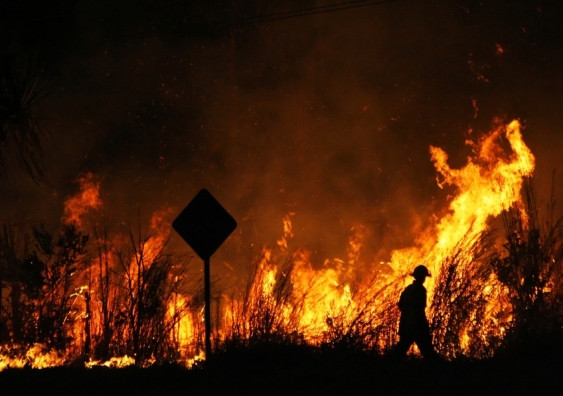Opening the Keys of Bushfire Risk Evaluation: The Role of a BAL Report
Opening the Keys of Bushfire Risk Evaluation: The Role of a BAL Report
Blog Article
Ensuring Shrub Fire Protection With Proper BAL Record Analysis
In the realm of bush fire defense, the precise evaluation of Bushfire Assault Level (BAL) records stands as a foundation for safeguarding homes versus the damaging effect of wildfires. With ecological elements and property characteristics playing substantial roles in determining the level of threat, a detailed understanding of BAL ratings comes to be vital.
Understanding Bushfire Assault Degree (BAL)
In the world of bushfire defense, comprehending the Bushfire Strike Level (BAL) is vital for making sure efficient mitigation approaches. BAL is a system used to determine the possible risk a building may deal with from a bushfire. It takes into consideration elements such as the sort of plant life, the slope of the land, the Fire Danger Index, and the Fire Intensity Index. Recognizing the BAL rating of a residential property is crucial for building builders, policymakers, and owners to apply ideal actions to guard versus bushfire dangers.

Significance of BAL Report Analysis
A crucial facet in bushfire defense preparation entails the thorough evaluation of BAL records to analyze the possible threats and figure out ideal reduction strategies. BAL records give crucial details about the potential effect of bushfires on a residential or commercial property based upon various variables such as plant life kind, distance to prospective fire hazards, and slope of the land. Assessing these reports with precision is vital in establishing efficient bushfire protection actions tailored to the specific danger account of a property.
Applying Fire Security Steps
Implementing reliable fire protection steps is vital for safeguarding residential properties in bushfire-prone locations. This includes cleaning combustible plant life, such as dry leaves and branches, within a specific distance of the residential property.
Furthermore, having a well-kept and appropriate water supply, such as a storage tank or swimming pool, can aid firemans in their initiatives to protect the residential property. BAL Report. In general, implementing a mix of these fire defense actions can significantly raise the chances of protecting buildings throughout bushfire events.
Mitigating Threats in Fire-Prone Locations
To fortify buildings against bushfire hazards, a tactical emphasis on mitigating threats in fire-prone locations is imperative. One critical aspect of risk reduction is preserving defensible space around buildings by getting rid of flammable vegetation, making sure adequate spacing in between frameworks and trees, and using fire-resistant landscaping practices.
Furthermore, constructing or retrofitting buildings see here now with fire-resistant materials and guaranteeing appropriate maintenance of roofs, gutters, and outside cladding can significantly boost the building's resilience to bushfires. Establishing and exercising a bushfire emergency strategy with all passengers, consisting of emptying treatments and communication techniques, is likewise important in mitigating threats effectively. By taking on an aggressive strategy to run the risk of mitigation in fire-prone areas, property owners can better protect their properties and improve overall bushfire preparedness.
Ensuring Building Safety and Durability
Making certain look at these guys the safety and security and resilience of homes in fire-prone areas needs an unfaltering commitment to durable preventive measures and critical planning. Residential property security starts with executing reliable procedures to minimize fire hazards.
Resilience, on the other hand, entails the capacity of a residential property to recuperate and hold up against from a bushfire. This can be improved through the installment of ash guards on vents and windows, guaranteeing that entry points for coal are reduced. In addition, having a well-thought-out emptying plan and practicing it routinely can dramatically increase residential property durability. Teaming up with next-door neighbors and regional fire authorities can also reinforce the safety and durability of properties in fire-prone locations. By proactively addressing these aspects, homeowner can much better secure their possessions and enjoyed ones from the risk of bushfires.
Conclusion
Finally, guaranteeing bushfire protection via correct BAL record evaluation is crucial for understanding the degree of threat presented by bushfires and executing essential fire security steps. By minimizing threats in fire-prone areas and guaranteeing residential property safety and security and durability, neighborhoods and individuals can better prepare for and reply to bushfire occasions. It is crucial to focus on fire precaution to secure lives and property in these high-risk atmospheres.
In the realm of bush fire protection, the thorough analysis of Bushfire Attack Degree (BAL) reports stands as a foundation for securing buildings versus the disastrous impact of wildfires (BAL Report). Recognizing the BAL score of a building is crucial for home policymakers, proprietors, and home builders to click for more info execute suitable measures to safeguard versus bushfire hazards

BAL reports offer critical info regarding the possible influence of bushfires on a home based on different variables such as vegetation type, distance to prospective fire dangers, and incline of the land (BAL Report). On the whole, implementing a combination of these fire security procedures can significantly enhance the possibilities of securing buildings throughout bushfire occasions
Report this page